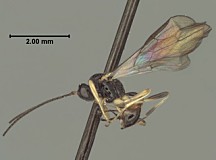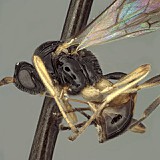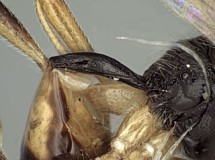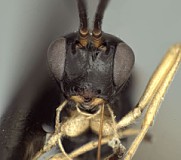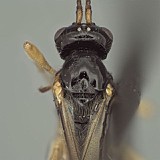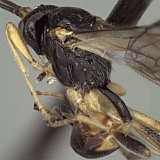Lorenzopius tubulatus (Fischer)
Lorenzopius tubulatus: Van Achterberg and Salvo 1997: 192, key to species of Lorenzopius; Wharton et al. (2012): 62-64 (review of Lorenzopius).
This species is readily distinguished from other Lorenzopius by the dark hind femur and the longer, narrower T1, which is about 3 x longer than wide in other known species.
There are no specimens currently determined for this OTU, or those specimens determined for this OTU are not yet mappable.
first label (white, black printing):
Portete de Tarqui
2900/3200m Ecuador
XII. 4-7. 70
Luis E. Pena (with tilda over the n)
second label (purple with black printing):
Holotype
third label (white with Opius and det Fischer printed in black and rest hand-written in black):
[female symbol] Opius
tubulatus
holotype n. sp.
det. Fischer
This material is based upon work supported by the National Science Foundation under Grant Number DEB 0949027.
Any opinions, findings, and conclusions or recommendations expressed in this material are those of the author(s) and do not necessarily reflect the views of the National Science Foundation.

